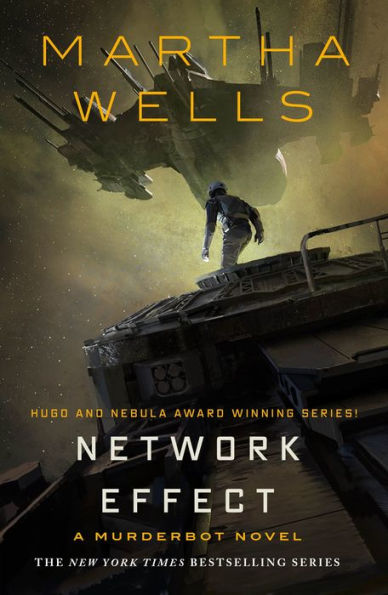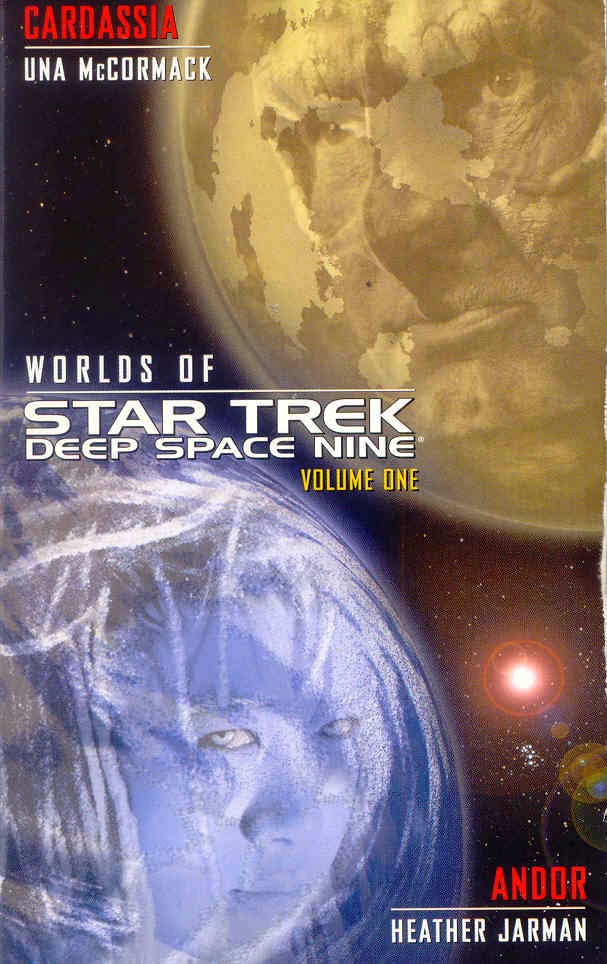Worlds of Deep Space Nine Volume One
Cardassia: The Lotus Flower
Una McCormack
Publication Date: June 2004
Timeline: December 2376
Unity represents a natural breaking point in the DS9 relaunch novels. Forthcoming stories in this series spin off in different directions, featuring increasingly new and diverse characters on various worlds. As a result, we’re doing away with the review sections used in the prior entries of this reread and transitioning to a looser model going forward. I’ll provide a brief plot synopsis, jump right in to my overall thoughts, single out a few memorable character beats or lines at the end, and conclude with an “orb factor” rating.
Progress: The Lotus Flower takes up the Keiko-O’Brien relaunch thread. At the end of Unity, Keiko had accepted a job offer from the Interstellar Agricultural Aid Commission to head the botany team charged with planet renewal, a job which she described to Miles as involving “crops, season patterning, new irrigation systems, everything.” Eight weeks later, in a story introduced through the lens of the journalists Teris Juze and Lamerat Anjen, we catch up with Keiko to discover that while she has indeed helped with several scientific advances designed to stimulate Cardassian crop cultivation in the Andak region, her work’s future depends on political winds blowing in a certain direction. She has established a solid camaraderie with another top-notch scientist, a geologist named Feric, who also happens to be a member of the Oralian Way, a movement that we’ve seen gaining traction over the last few books in this series. Yet there’s resistance to this religious activity: Tela Maleren, who applied for the directorship of the Andak project but was passed up in favor of Keiko, believes that the Oralian Way should not be permitted its public rituals, and she ominously cautions Keiko: “You are serving neither yourself nor the project if you ignore this.”
Keiko’s also feeling anxious because of Vedek Yevir Linjarin’s impending visit. While Keiko and Yevir don’t have any significant backstory, Keiko is understandably upset that Yevir called for Kira’s Attainder. There’s more at stake than just personal feelings, too: the Andak project is in need of funding. While the Castellan of the Cardassian Union (basically, their head of government), Alon Ghemor, has staked significant capital in getting these funds to Andak, the Directorate representative and former gul Merak Entor is heavily opposed to it, pushing instead for the Setekh Project. Miles travels to the capital to give the S.C.E’s endorsement of Andak, while trying to stay out of the political crosshairs. As he observes:
Unfortunately, it wasn’t just a question of may the best project win. There was a whole host of political agendas surrounding this decision, some of them to be explicitly aired in these sessions, some of them remaining very strictly implicit.
Traditional political jockeying soon takes a backseat, though, as a young girl named Nyra (Tela’s daughter) threatens to detonate a bomb strapped to her body if her demands aren’t met: namely, the removal of Ghemor’s government, the outlawing of the practices of the Oralian Way, and the swift departure of all aliens from Cardassian soil.
Through a complicated series of maneuvers featuring Garak, Gul Macet, Mev Jartek (an advisor to Ghemor), and Korven (once heavily involved with the True Way), we learn that Nyra is in fact being used as a tool by the True Way. In an unexpected but convincingly developed turn, Yevir is able to diffuse the situation with Nyra. Garak’s behind-the-scenes machinations, worthy of the best Cardassian enigma tales, ensure that other players, including Entor, are appropriately dealt with, and we learn that the true engineer behind this situation was Jartek.
The crisis causes Keiko and Miles to re-evaluate whether it’s worth remaining on Cardassia, given the potential dangers for their children Molly and Yoshi, but they ultimately decide to stay. Keiko, in particular, inspired by Yevir’s conversation with Nyra, finds herself compelled by an ethical imperative: “It would be irresponsible to leave. Do you understand what I mean? That it wouldn’t be right for us to sit back and do nothing, when there’s so much that needs to be done.”
Behind the lines: This is McCormack’s first published novel, but it’s written with the assured hand and deft touches of a pro. From the very start, it’s clear that McCormack enjoys description, and is good at it (“The mountains were shot through with black rock, which would glitter when hit by the harsh Cardassian sun, sending sudden sharp shards of light over the base and the settlement.”) This is a particularly relevant narrative asset for this story, set on an alien—and heavily damaged—world, and makes it more immersive.
Buy the Book


Network Effect
Another strong point is the character development. Even when shadowy Cardassian motivations are left deliberately unclear, the tensions arising from those motivations are palpable, and the ensuing conflicts keep us engaged. The relationship between Keiko and Miles is well handled, the insights we receive into the reconstruction of Cardassia and its nascent democratic ways are interesting, and everyone feels grounded. McCormack’s work on Garak is probably the standout element here, as she finds just the right voice, striking a delicate balance between the cryptic Garak we knew on the series and the fuller portrait Andrew J. Robinson gave us in A Stitch in Time. The Garak-Miles interactions, though brief, are excellent, and are probably best summed up by this line: “You, Miles,” Garak murmured, “are just an engineer in exactly the same way that I am just a tailor.”
Side characters are also delightful. Doctor Naithe, for instance, an endlessly talkative Bolian reminiscent of TNG’s barber Mot, doesn’t need many lines to leave a favorable impression. And while Yevir has appeared in a number of relaunch novels, and my initial response to him was clearly negative, the way he uses his experiences on occupied Bajor to connect with Nyra on a basic humanistic (I know, they’re both aliens) level here not only adds great dimension to his character, but invites me to reconsider my stance.
I also appreciate that our main point-of-view character is Keiko, rather than Miles, because that honors S. D. Perry’s approach in the previous book. Also, frankly, at this point Keiko is a more compelling character than Miles. She is experiencing growth, really coming into her own with a career that channels her passion. McCormack nicely summarizes her life journey thus far, and with this passage unlocks the novel’s title:
Keiko was not able to settle to her satisfaction the matter of what she should do with her life until she found herself taken out on a school field trip. She had not been looking forward to the event, suspecting it would be hot (it was the middle of a very humid summer), and that it would leave her so tired it would ruin the rest of her week. She sat and sweltered bad-temperedly for most of the afternoon, until an exasperated teacher (and Keiko understood more of the frustrations of teachers these days) lost patience, and demanded an essay on the life cycle of the lotus.
Thus begins a sequence of events that eventually lead us here. I mentioned description before, and I want to remark that this image of the lotus is a beautiful link with Keiko’s healing work to restore nature and promote agriculture on the scorched Cardassia, melding the physical with the spiritual. Her relationship with Miles is also strengthened by these events. He has an adrenaline-spiked moment in which his fear and frustration find an easy target (“Miles stared at Jartek—at the ridges on his face, at the strange and alien skin—and loathed him, and all of Cardassia with him”). Throughout the pages that follow we sense his struggle, and the complexity of his emotions, which harken all the way back to “The Wounded” (“It’s not you I hate, Cardassian. I hate what I became because of you.”) In the end he’s able to calm himself, see reason, and live up to his best self, which not only makes him a better person, but a better partner to Keiko.
Thematically, the novel concerns itself with the process of adapting to change, and wrestling with feeling like an outsider. These themes manifest in many ways: religious tolerance in the Oralian Way subplot, attachment to an idealized past in the Traditional Way conspiracy plot, how a culture or set of beliefs may affect one’s children (Keiko and Miles’s, specifically, but also Nyra), even Miles’s adjustment of the home temperature regulators to try and make Keiko more comfortable. Early on, Keiko realizes that her purpose on Cardassia is more than increasing precipitation levels: “Keiko had known even before she’d set foot here that a large part of her job at Andak would be making the staff come together not just as a team, but as a community.” By the novel’s end, she’s taken firm steps on that path.
One of the stylistic differences, I think, between this novel and McCormack’s most recent work, is that over time she has become more skilled at dramatizing conflict and creating interesting externalized scenes, rather than peppering external occurrences into extended interior monologues. As a result, her newer material has a better sense of flow, with smoother transitions between points of view, and clearer scene-setting, elements which at times can feel forced or a bit clumsy here. Also, while the emotional arcs reach satisfying conclusions, the plot is resolved with an almost-deus ex machina that raises as many questions as it answers.
Those are minor setbacks, however, and this novel is a solid start to the Worlds of Deep Space Nine mini-series.
Memorable beats: Unsurprisingly, the best lines go to Garak. To wit:
“What a fate! At my time of life, to be reduced to upholding democracy.”
And while we’re on the subject:
“The trouble with democracy,” Garak murmured into Miles’s ear, “is that it takes up too many mornings.”
The following acerbic reflection is pure latinum:
“In Garak’s extended and not always entirely enthusiastic experience, the Federation seemed to specialize in saying one thing and doing another. One might almost call it their Prime Directive.”
It’s not all cynicism, though. Garak gives a Picard-worthy speech at the end:
“…[W]hen it comes down to it, what matters is that we won through negotiation. We didn’t win using the same tactics as the True Way were trying. We didn’t win through resorting to violence.”
Given the 24th century’s generally utopian depiction across the various Trek series, it was nice to see Keiko reflecting on a challenge that wouldn’t be solved by a post-scarcity society, in the process making her that much more relatable to us:
For quite some time in her otherwise ordered youth, one thing had troubled Keiko, had disrupted the sense of definiteness that she preferred. For a long time, longer than she generally admitted, Keiko had had no idea what it was she wanted to do.
Orb factor: A powerful setup with intriguing character dynamics and a somewhat anticlimactic resolution earns this one 8 orbs.
In our next installment: We’ll be taking on the second novel in Worlds of Deep Space Nine: Volume One, Heather Jarman’s Andor: Paradigm, in this space on March Wednesday 4th!
Alvaro is a Hugo- and Locus-award finalist who has published some forty stories in professional magazines and anthologies, as well as over a hundred essays, reviews, and interviews. Nag him @AZinosAmaro.










